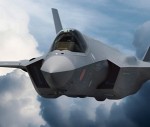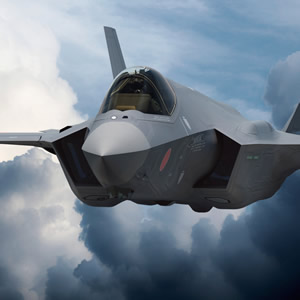
Japan’s Ministry of Defense (MoD) announced that it has agreed to buy 4 Lockheed Martin F-35A Joint Strike Fighters (JSF) at a cost of $128.61 million each, an increase of $3.7 million over the $124.83 million price negotiated last December. The four aircraft are scheduled for delivery in Fiscal Year 2016.
A formal letter of offer and acceptance (LOA) was signed in Japan on 29 June and includes four conventional take-off and landing (CTOL) variants of the F-35, spare parts, and two simulators for a total of $756.53 million. Although the base price of the aircraft itself increased, the cost of the spare parts and two simulators dropped from an initial estimate of $258.48 million to $240.83 million, a significant savings for Japan.
The Japanese government’s decision to buy the fifth-generation F-35 while rejecting the less expensive battle-proven Boeing F/A-18E/F Super Hornet and Eurofighter Typhoon was a volatile and contentious decision from the very beginning. With South Korea soon to announce its choice for its next generation fighter, the F-35 continues to spawn disagreement among experts and analysts.
Japan’s leaders opted for the F-35 after reportedly receiving a classified briefing that touted the impressive capabilities of the aircraft. This briefing was obviously enough to sway the Japanese to buy the F-35 at a time when China’s J-20 became the object of some flattering media reports that fueled Japan’s concerns about the offensive capabilities of its Asian neighbor.
Former Japanese Defense Minister Naoki Tanaka publicly threatened to cancel the entire 42 aircraft buy if costs continued to rise and delays became problematic. A decision on the remaining 38 aircraft has not been finalized yet.
Price increases were considered inevitable when the United States reduced its 2013 order by 13 aircraft and 179 total units between 2013 and 2017 in January. Budget restraints and unresolved development difficulties were cited as contributing factors behind these reductions. The US Department of Defense (DoD) is buying the F-35 at the same time the aircraft is still being developed, a process commonly referred to as concurrency.
A major criticism leveled at this process is the prospect that early model production aircraft may require extensive modifications at a later date as design flaws are identified and require correction.
The DoD previously announced revised cost estimates that indicate the overall cost of the F-35 program could be expected to rise $17 billion above a 2011 estimate of $396 billion. Slowing production over the next five years added as much as $6.2 billion to procurement and development costs alone.
Lockheed Martin and Pentagon officials working in the F-35 project office have stated that the eventual cost of the F-35A would bottom out at $78.7 million per aircraft. That estimate is based on a projected US buy of 2,443 aircraft, 716 international orders, and does not include all costs of development.
The Japanese Air Self-Defense Force (JASDF) hopes to procure a total of 42 Lightning IIs to replace its aging fleet of McDonnell Douglas F-4J Kai Phantoms. Japanese news sources have estimated that the overall lifecycle cost of 42 aircraft would be nearly $13 billion while the US Defense Security Cooperation Agency (DSCA) has offered an estimate of approximately $10 billion.
An anonymous Japanese MoD source has been quoted as saying that the price increase was explained by US representatives as based primarily on the Pentagon’s decision to delay US procurement and was entirely unavoidable. Apparently, Japanese leaders were satisfied with the explanation and accepted the cost increase. This source stated that Japanese leaders felt the situation was “understandable” and Japan could not expect an offer of a lower cost when those nations involved in the cooperative development of the F-35 would likely be paying a higher price.
Japanese defense analyst Shinichi Kiyotani has been quoted as saying he believes Japan came away with a pretty good deal when “compared to the price rises that might come later.” Technical problems, initial order cancellations, or lengthy production delays would undoubtedly cause further price increases.
While the US continues to trumpet the F-35 as the most capable and versatile fifth-generation aircraft in the world, questions remain regarding the aircraft’s design and performance.
Lockheed Martin was relieved and pleased with news of the signing saying that the company “is honored Japan’s Ministry of Defense and the United States Government have signed a Letter of Offer and Acceptance (LOA) for the first four of 42 F-35A Lightning II 5th Generation multirole fighters.”
Lockheed Martin, looking to the future, considers the sale of the F-35 to Japan as a means of gaining an edge in the competitive environment now surrounding high-tech weapon’s sales worldwide. Lockheed is hopeful that the signing of this LOA will help to convince South Korea to select the JSF as its next generation fighter and may even lead to a deal to eventually replace Japan’s F-15 Eagles with later variants of the F-35.
With national budgets shrinking and F-35 development costs rising, the door will remain open for other competitors at least in the foreseeable future.

















